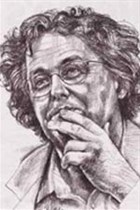Two graduate students in the Wits Journalism department each took a look at a major newspaper's coverage of the continent since 1985.
What they found was that while coverage has not increased much, it has in recent years gained more depth, spread from regional coverage to the rest of the continent and shifted from being overwhelmingly focused on conflict to more about trade and investment. But our papers still generate very little of their own copy about Africa, relying as much as ever on the Western agencies to tell us about our own continent.
Student Colin Ford looked at Business Day's coverage since 1986 to see what they were covering in Africa and how they were doing it. In a typical week in 1986 he found that the paper had 35 stories about Africa, which was 24% of their international coverage.
The quantity dipped in 1994, when we were pretty much self-obsessed (and largely ignoring the Rwandan genocide, for example) when there were just 21 weekly stories (29%) and then moved upwards in line with a general increase in international coverage: to 49 stories (26%) in 2004 and 42 in 2014 (30%).
Significantly, though, the length and depth of articles increased: whereas in 1986 only four were more than 400 words, this had risen to 26 in 2014.
In 1986 the stories were mostly about our neighbours, but there was a steady increase since then in the number and spread of countries covered across the full range of the continent.
The biggest change came in the subject matter: in 1985 there were 15 stories weekly about conflict and none about business or trade. This had changed in 2014 to just two about conflict and the majority (18) about business.
Though Business Day appointed an Africa editor in 2013, he largely worked with agency copy, since the newspaper's own correspondents still only provided less than half the stories. This is largely a question of cost and convenience, but it does mean that our perspective is still driven from the Western capitals. What is now the largest agency in the world, the Chinese Xinhua, does not feature at all.
Student Nontobeko Zuma asked similar questions about the Star's coverage. She found that it tended to follow national policy. Pre-1994 it was mostly about our neighbours, and thereafter it followed the wider spread of countries that we were increasingly engaged with in diplomacy and trade. Whereas it was dominated by reports of "politics, conflict and disease" in the earlier phase, it also shifted much more in recent years to the economy and business.
The Star had 43 stories in a typical week in 1984, of which 32 came from the major agencies, 37 were about Southern Africa and 38 were about conflict. None of the three that dealt with business appeared on the business pages. There was no sports news at all. In 1994 this dropped to 36 stories, of which only six came from the newspaper's own Independent Foreign Service. The stories now were balanced between health and conflict, and six stories appeared in the sports section. It now included many more countries in West, East and Central Africa.
By 2004 this went up to 52 stories, though agencies still supplied the majority of 33. One observation was that there was more coverage of the anniversary of the Rwanda genocide than there had been of the original horror. There were now 10 stories on the business pages and three in sports.
In 2014 the Star as a whole was thinner, but of the 41 African stories in a week, 22 were in the business section. Agencies provided 30 of the stories.
Zuma noted the paucity of images from Africa throughout this time, which probably reflects the supply of pictures from the agencies. With the rise in migrants, one might have expected more.
Those migrants themselves might be visible in our cities but my impression is that they are largely absent from our media except as subjects of debate about how welcome they are, or are not.
